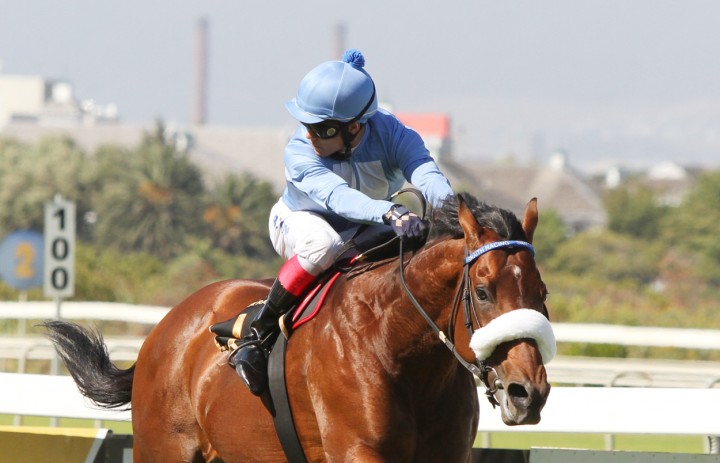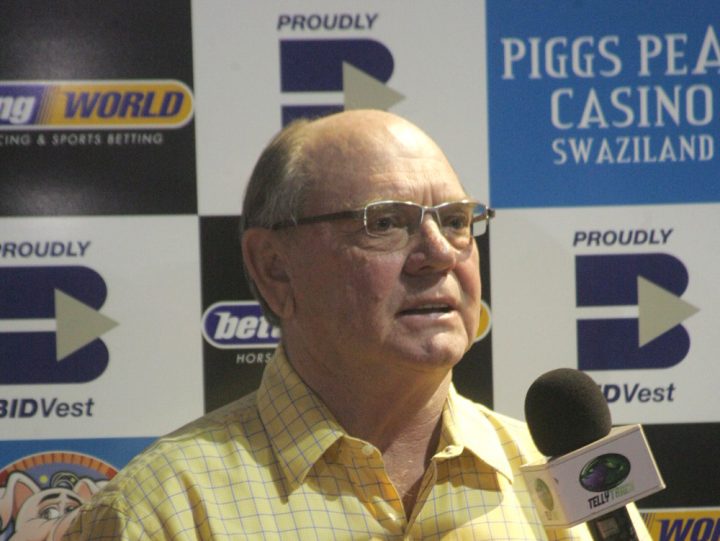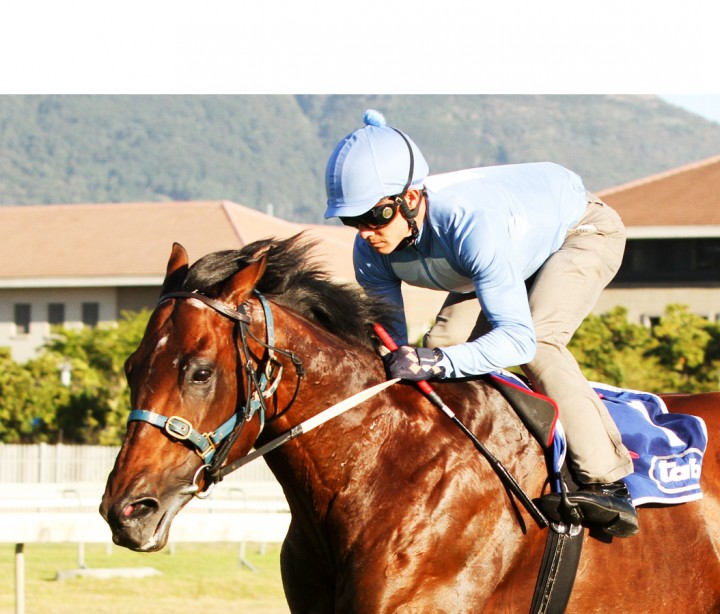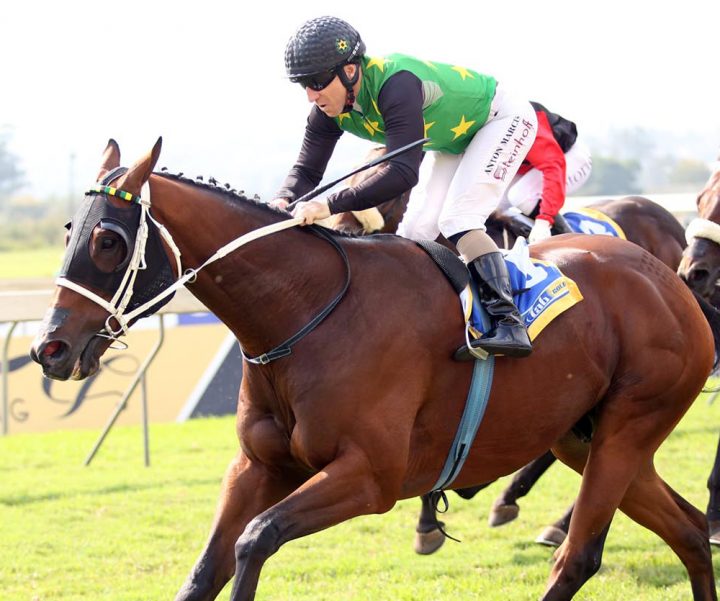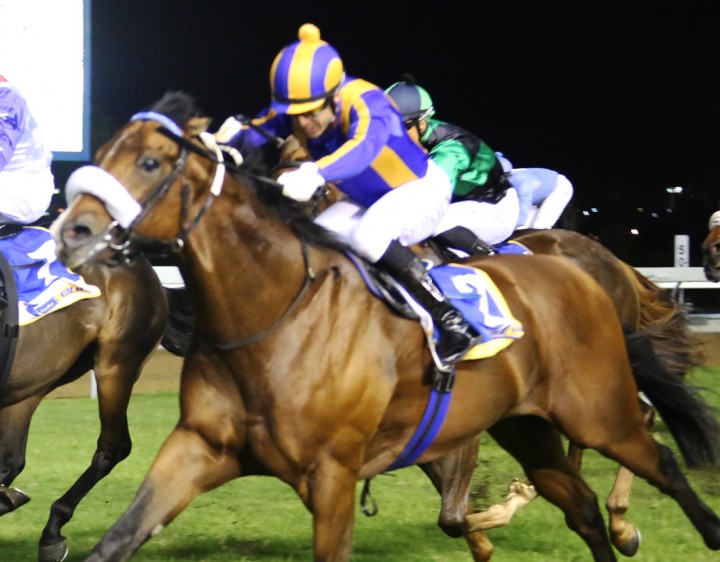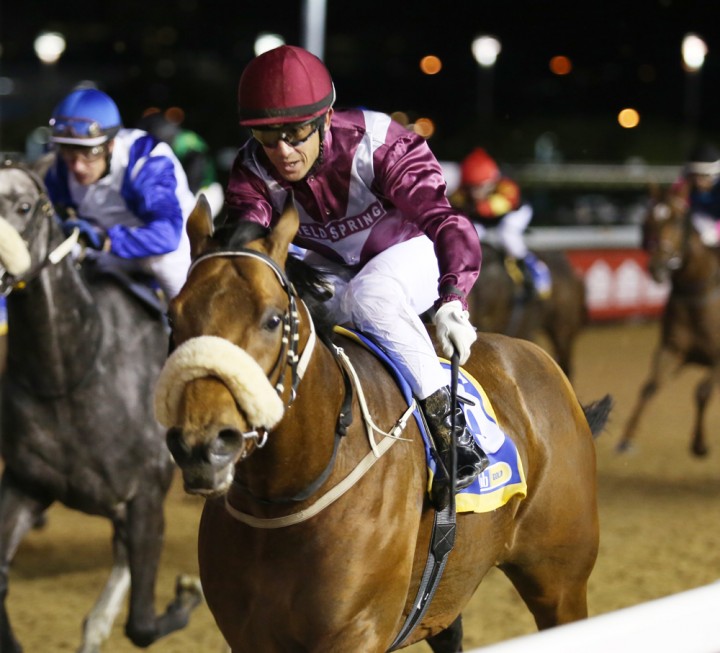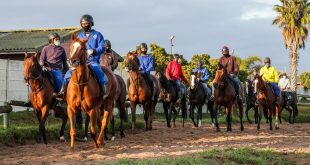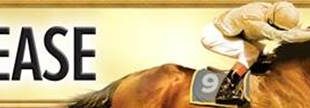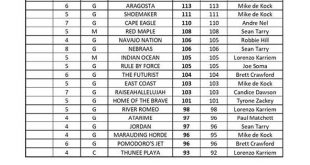The Vaughan Marshall-trained Exelero’s excellent victory in the Pinnacle Stakes race over 1200m at Scottsville on Sunday under Anton Marcus might have had more of an influence on the Gr 1 Tsogo Sun Sprint than first meets the eye, because he defied the Pietermaritzburg course’s infamous draw bias. Marcus also won an earlier race over 1000m from an outside draw on Omega Onslaught and then Muzi Yeni made it a hattrick for sprint event outside draws when winning a 1200m event on the Duncan Howells-trained Elusivenchantment.

Exelero (Nkosi Hlophe)
The far side rail is at present five metres further in than usual and the jockeys, according to both track manager Sthembiso Dlamini and top rider Muzi Yeni, are “loving it.”
It was not only the draw numbers which were significant on Sunday, but the path the horses travelled. All three of the winners stuck to their stations for virtually the entire race.
Marcus believes the best thing that can happen to Scottsville is to keep the rail out there. He advocated keeping it there for the big Festival Of Speed meeting even if this meant a reduction in field sizes. In his belief the draw bias at Scottsville is largely due to perception and it has become vital to alter this perception.
History has shown as soon as the rail is moved back to its original position, the horses flock like sheep back to the inside. Ironically one reason for this might be due to the moving of the rail inward in the first place, because of the fresh ground it creates.
However, it is more far reaching than that and Muzi Yeni’s opinion revealed why the operators appear to be caught in a catch 22 situation.
Yeni believed in normal Scottsville events, outside drawn horses tend to be used up early by rushing to the inside. However, without the need to do so yesterday they were conserving energy by staying straight.
However, asked whether jockeys would revert to the inside when the rail is back to normal, he replied, “Of course.”
Yeni explained, whether there was an actual draw bias or not, there was a deeply ingrained perception of a draw bias.
Horses are pack animals so like to run in a bunch. Furthermore, wherever “the speed of the race is” there is more opportunity to use slipstreaming, so it would be foolish to stay on your own out wide.
The problem might be compounded by the track becoming compacted on the inside. However, on the other hand it does become cut up and uneven, so this explanation has its flaws.
The final factor, and Yeni has not been the first to say it, is the responsibilities jockeys have towards their clients.
Yeni said trainers do not specifically instruct jockeys to go to the inside. However, if they return to the parade ring having stayed on the outside, questions will be asked unless the horse had won. After all, everybody in racing knows that “you have to go to the inside to win at Scottsville, so what on earth was this jockey’s thinking.”

Muzi Yeni (Nkosi Hlophe)
In fact on one occasion a Scottsville course manager approached a detractor triumphantly after a horse had won on the outside. The response of, “It would have won by ten lengths if it had been on the inside” showed just what a hiding to nothing the course managers and operators are on regarding this issue.
Most straight courses around the world have a draw bias, but unlike Scottsville it usually varies from meeting to meeting, so the problem is not compounded.
In fact, there have been days in the fairly recent past when Scottsville had a palpable advantage on the outside. Such a day was at the Festival Of Speed meeting in 2010.
Another course where the perception of a draw bias is beginning to become deeply ingrained is the Vaal. On the outside track jockeys tend to stick to the outside and on the inside track they stick to the inside.
Commentator Alistair Cohen is one prominent racing industry man who believes no bias actually exists, or at least on the outside track he believes it doesn’t.
Scottsville course manager Sthembiso Dlamini was delighted by Sunday’s results and the jockeys positive feedback.
However, even he is pessimistic about anything changing once the far rail is moved back to its original position for the April 27 meeting.
He said, “It’s not so much there is a draw bias as the jockeys use the rail as a guide. But we hope in big fields they will use the whole track.”
He said placing the bank of stalls on the outside rail for smaller fields had been tried before, but “did not work” because at about the 600m mark everybody headed towards the inside anyway.
Meanwhile, Exelero has probably booked his place in the Tsogo Sun Sprint field as the handicappers have raised him from a 97 merit rating to a 103. This five-year-old Western Winter gelding has had a big reputation since day one of his career. However, he was disappointing overall until, firstly, blinkers were fitted, and secondly, he was stepped back to the 1200m trip. He has won three races over 1200m this season, although he did fail twice when stepped up to Gr 2 class.
The Dean Kannemeyer-trained Captain Alfredo and the Craig Eudey-trained Flyfirstclass weren’t disgraced on Sunday 1,25 lengths and 1,5 lengths back respectively, considering they both gave the winner 1,5kg.
The disappointment of the race was the Michael Roberts-trained three-year-old favourite Natal, but he was reported fatigued and coughing so this was not his race and he can bounce back.
By David Thiselton

